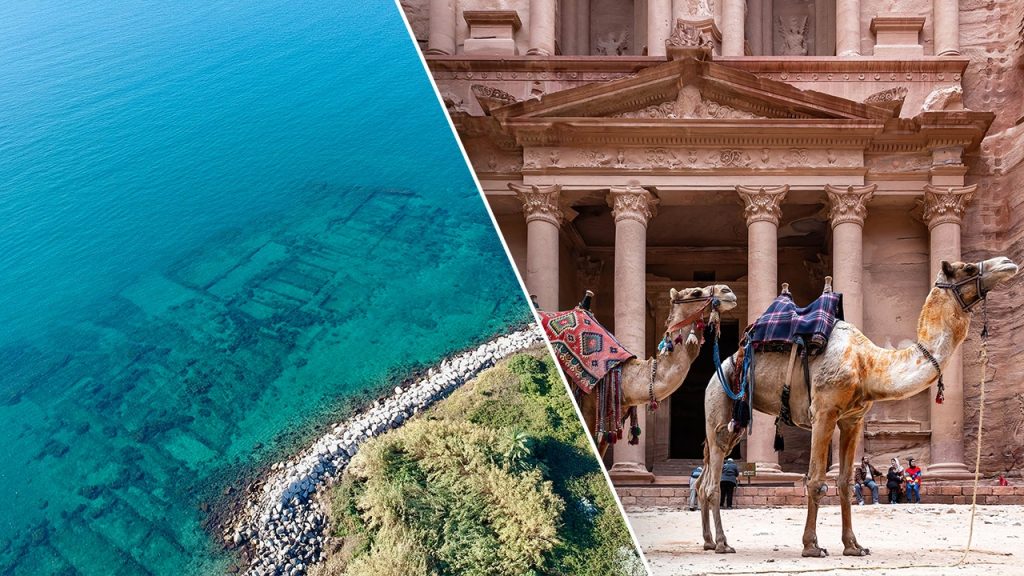Archaeologists have recently uncovered the remains of a 2,000-year-old temple submerged off the coast of Naples, Italy, that was likely constructed by immigrants from Nabataea, an ancient Arabian kingdom known for Petra’s iconic rock-carved structures. The Nabataeans were renowned for their extensive trade network that stretched from northern Arabia to the Mediterranean and dealt in valuable commodities like incense, gold, ivory, and perfumes. This temple, believed to have been utilized by Nabataean traders, was eventually buried under concrete and pottery, possibly indicating the traders’ departure from the area as their wealth declined.
The discovery was made by student Michele Stefanile from the Scuola Superiore Meridionale in Italy, who began an underwater study in 2021 to explore the region near Pozzuoli, around 10 miles east of Naples. Researchers mapping the seafloor in 2023 identified two submerged rooms with Roman-style walls that contained two white marble altars inscribed with Latin phrases dedicated to the Nabataean god Dushara. The presence of these altars and inscriptions suggests a fusion of Nabataean and Roman architectural styles, indicating possible interactions between the two communities.
The temple’s location near Pozzuoli, or ancient Puteoli, a significant Roman trading port, hints at its historical significance as a hub for trade and cultural exchange. This area has seen extensive volcanic activity over centuries, resulting in the submersion of over a mile of Roman-era buildings, including warehouses and other structures. The artifacts recovered from this region since the 18th century hinted at the presence of a temple, but its exact location remained unknown until now. The temple may have been buried in response to changes in trade routes following Nabataea’s annexation into the Roman Empire in A.D. 106, which likely impacted the Nabataean traders’ activities in the area.
The combination of Nabataean and Roman influences in the temple’s construction and inscriptions sheds light on the cultural and religious exchanges that took place in the region during this period. The temple’s incorporation of Roman architecture and Latin inscriptions alongside Nabataean religious elements reflects the complex interplay between different civilizations in the ancient Mediterranean world. The discovery of this submerged temple provides valuable insights into the history of trade, migration, and religious practices in the region and highlights the diverse cultural interactions that were a hallmark of the ancient world.
The study of this submerged temple off the coast of Naples represents a significant contribution to the understanding of ancient maritime history in the Mediterranean region. The temple’s proximity to Pozzuoli and its connection to the Nabataean kingdom offer researchers a unique opportunity to explore the dynamics of trade, migration, and cultural exchange that shaped the ancient world. By uncovering the temple’s remains and interpreting its architectural features and inscriptions, archaeologists can piece together a more comprehensive picture of the ancient societies that once thrived in this coastal region, shedding new light on the interconnected nature of civilizations in the Mediterranean basin. This discovery underscores the importance of underwater archaeology in uncovering hidden histories and expanding our knowledge of the past.


